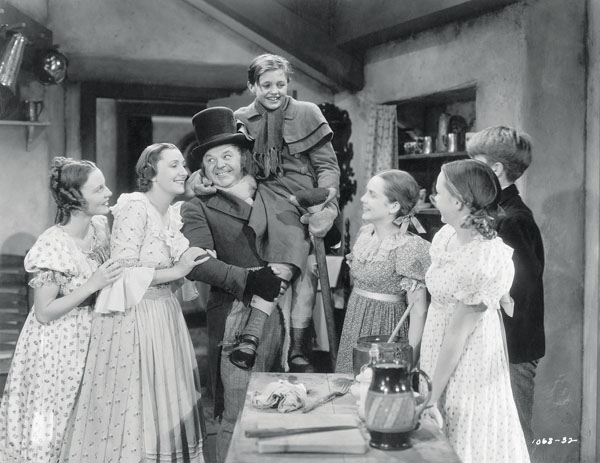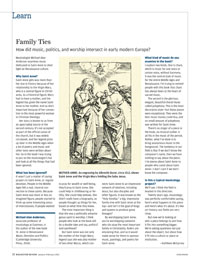Learn
 INEQUALITIES: The wealthy but miserly Ebenezer Scrooge lives like Bob Cratchit (above)—illustrating the idea that income inequality isn’t the same as consumption inequality, though both are increasing. (Photo: Corbis)
INEQUALITIES: The wealthy but miserly Ebenezer Scrooge lives like Bob Cratchit (above)—illustrating the idea that income inequality isn’t the same as consumption inequality, though both are increasing. (Photo: Corbis)A macroeconomist who specializes in the labor market, Mark Bils is coauthor of a study finding a rise in consumption inequality in the United States.
Mark Bils is the Hazel Fyfe Professor in Economics. An anonymous donor’s bequest honoring the Fyfe family helped create the professorship, named in honor of Hazel Fyfe Gallaher ’46.
Why is it important to look at consumption inequality?
There’s a lot of emphasis on inequality of income or wealth. But that might not map into consumption inequality. If the rich save their incomes, or give them away, then they free up resources for someone else’s consumption. Take Ebenezer Scrooge, for example—it’s very unequal that Scrooge has so much wealth. But he’s so miserly that he lives kind of like Bob Cratchit. That’s true even before he gives his money away. Inequality in consumption is presumably what we most care about, but it’s hard to measure.
Why?
There’s not much survey data on household consumption. There are two ways one might estimate household consumption, and both are difficult. The standard way is to ask people how much they spent. For the United States, that’s done by the Bureau of Labor Statistics through the Consumer Expenditure Survey, or CE. You can also estimate it indirectly—if you know somebody’s income and know how much they saved (or borrowed), you could estimate consumption by income minus savings. But that’s a noisy estimate in practice, so rarely considered.
Some researchers have suggested that consumption inequality hasn’t risen with income inequality. Why?
Income inequality has gone up substantially over the past 30-plus years, the time period that Mark Aguiar and I consider in our paper. Researchers have shown that, based on the CE survey, consumption inequality went up much less than did income inequality. When Mark and I estimate consumption inequality directly from the CE data, we similarly find that measured inequality in total expenditures increased by only about a third as much as income inequality, comparing high to low-income households. Those direct measures of expenditures underlie the view that consumption inequality didn’t rise that much.
What prompted your study?
There are two things that motivated Mark and me to look at this in another way. One is that the conventional wisdom—little rise in consumption inequality—is extreme in the following sense. Given the rich are getting relatively richer, if their consumption didn’t go up much, their savings rate would need to have exploded upwards; and we don’t think we’ve seen that over the past 30 years. Our main motivation, however, is that the CE data have done an increasingly poor job of measuring household consumption over those last 30 years. That is, it fails to capture the average growth in consumption spending shown by retail measures of aggregate spending. We had concern that it may increasingly fail to capture spending by richer households, causing it to undermeasure the true rise in consumption inequality.
What did you do differently?
We focus, not on how much households report spending in total, but on how they report spending across different categories of goods—specifically luxuries versus necessities. Just as examples, consider entertainment spending, say going to events, versus spending on groceries. Entertainment spending is a luxury—its share of spending is higher for richer families—while groceries are a necessity. We estimate changing consumption inequality from how rapidly high-income families shifted spending toward luxuries (like entertainment), compared to what we see for poorer families. We can estimate changing consumption inequality by this approach even if the data fail to capture the growth in spending for rich versus poorer households and fail to capture overall spending growth on luxuries versus necessities.
And what is your bottom line?
We see that higher-income households shifted their spending much more toward luxuries than did lower-income households. That shift requires a sizable increase in consumption inequality over the past 30 years. In fact, we conclude that the rise in consumption inequality mirrored the rise in U.S. income equality over those years. So that differs dramatically from what had been concluded based on the direct measures of household spending.
—Kathleen McGarvey

